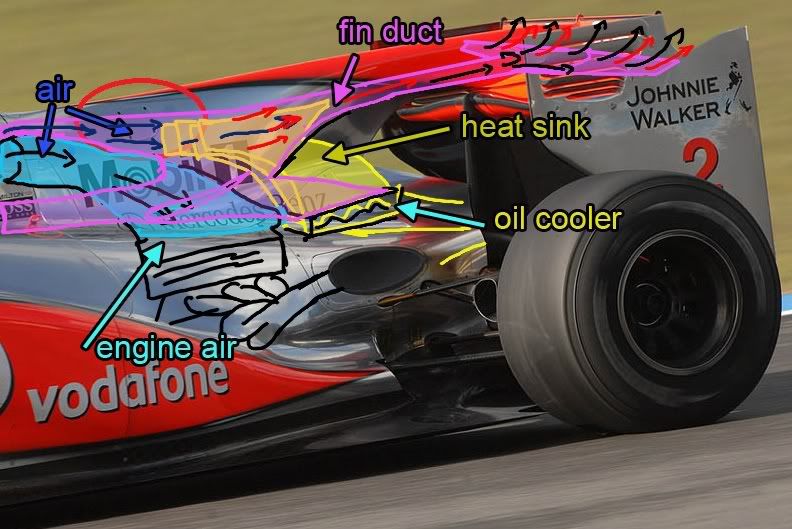slimjim8201 wrote:It seems that everyone thinks that the teams are trying to stall their wings at high speeds to reduce drag. This goes against everything that I understand about aerodynamics. Please feel free to chime in, but every form of aero stall I've encountered has resulted in a loss of lift and an increase in drag.
I would think that the teams are devising methods to avoid stall, not induce it...
I think that is really the point of this thread - to figure out why exactly it might be advantageous to stall the wing, given that we hear this so often from so many different, seemingly authoritative, sources. Like you, I find it counter-intuitive. But then, so much in aerodynamics is just that.
The only hypothesis that I can come up with as to why a stall might be worthwhile is if the induced drag on the wing is so great that it more than makes up for the added form drag that occurs in a stall. Regardless of how horse's diagram is labeled, the wing vector, perpendicular to the chord, is relatively correct, and it does indeed have a drag component as well as lift. So it's
this drag that I'm curious about.
Now, what stands out to me the most in your calculations is that the drag force really doesn't change that much from a normal to a stalled state. 39.3 vs 40.4 - I'll call them "drags" since I don't know what your units are. 1.1 drags*. This surprises me, and I'd guess it would you also, given the common understanding of stalls and drag. The difference should be much more, right? So, I think there is a trade-off happening there between induced and form drag; and I suspect that if you cranked the AoA of the whole assembly just a tad, you might actually see the total drag
fall when the wing stalls.
Just a theory, of course - but to me it's the only one that fits the stall=good paradigm.
Oh, yes; paradigm**.
And the second question, of course, is how one would get the wing to stall. But I'd be happy enough if I could find an answer to the first.
*approx. equal to one pink boa and a blonde wig, for those following along at home.
**sorry - sidecars - I'll send you the recipe

